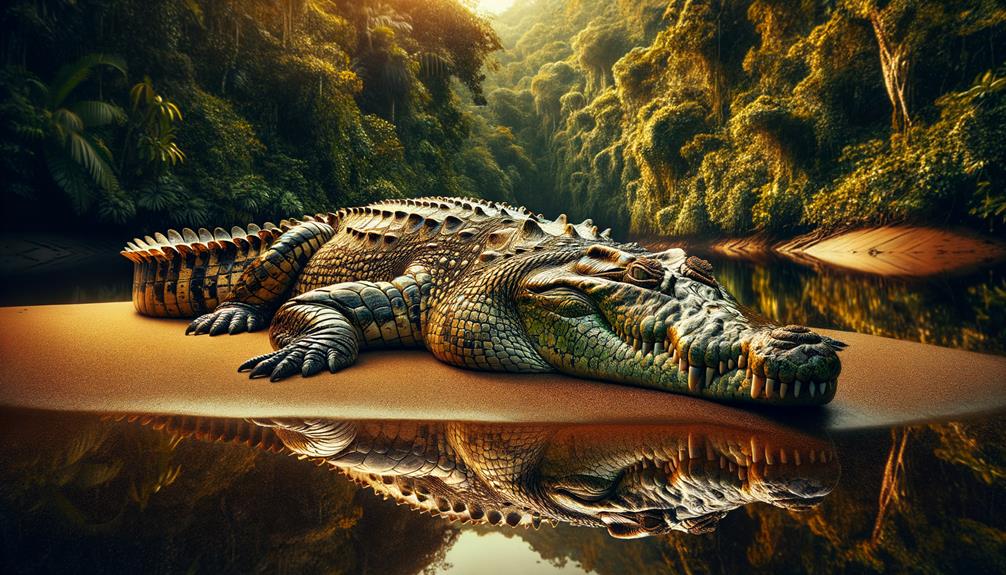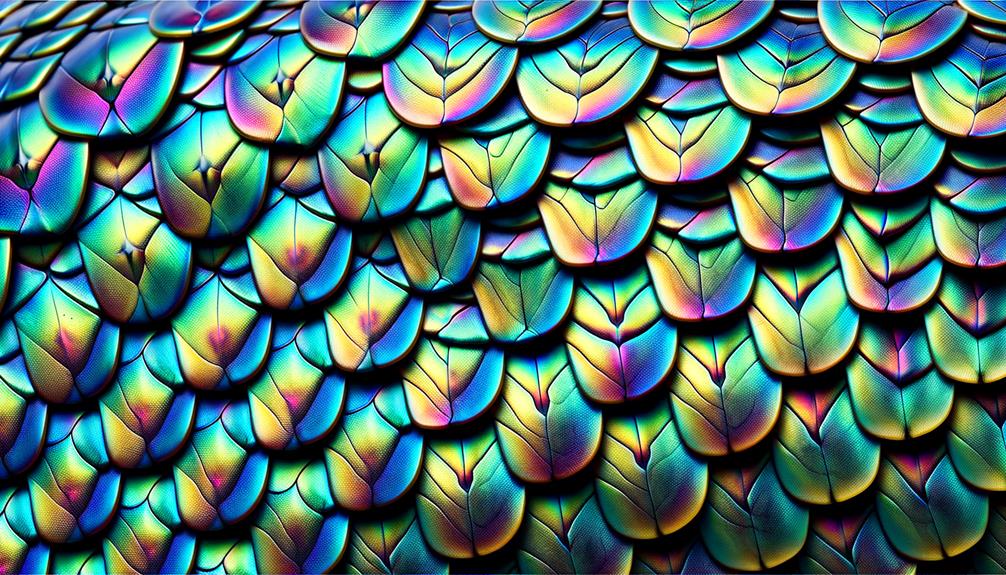I've always found it fascinating how some reptiles have mastered the art of camouflage. Take chameleons, for instance – their special cells called chromatophores allow them to rapidly change their skin color and patterns to blend in with their surroundings. Then there's the incredible leaf-tailed gecko, whose cryptic coloration lets it disappear against leaf litter and tree bark. Its skin flaps even scatter shadows, making it nearly invisible. These adaptations aren't just about hiding from predators; they're also remarkable examples of evolution, fine-tuned by natural selection. It's easy to see how these reptiles gain a significant survival advantage from their camouflaging skills. Stick around, and you might uncover even more intriguing details about these remarkable creatures.
Key Takeaways
Reptiles have mastered the art of camouflage, blending seamlessly into their surroundings to evade predators and sneak up on prey.
Chameleons are experts at rapid color change, using their chromatophore system to adapt to various environments.
Leaf-tailed geckos in Madagascar have developed cryptic coloration and masquerade mimicry, making them nearly invisible against leaf litter and tree bark.
Desert-dwelling lizards have evolved sand-colored scales to match their arid surroundings, enhancing their camouflage.
Fantastic leaf-tailed geckos use skin flaps and motionless posturing to remain undetected in the dense rainforests of Madagascar.
Many reptiles have developed cryptic coloration specifically adapted to their habitats, allowing them to evade predators and prey effectively.
Masters of Disguise
When we venture into the world of reptiles, it's astonishing to see how they've perfected the art of disguise. As I take a closer look at these creatures, I'm struck by their ability to blend in seamlessly with their surroundings. The chameleon is a prime example. Its rapid skin color and pattern changes aren't just a clever trick; they're a vital survival strategy. Thanks to its intricate chromatophore system, chameleons can adapt their appearance in response to various stimuli, merging with leaf litter or forest canopies with remarkable precision.
But chameleons aren't the only experts at disguise. Many reptiles employ cryptic coloration to match their backgrounds, making them nearly invisible to predators and prey alike. The leaf-tailed gecko, for instance, can disappear against a backdrop of fallen leaves. This camouflage is so effective that unless you're an expert or have a keen eye, you might miss them entirely.
Some reptiles have also mastered masquerade mimicry, taking on the appearance of inanimate objects like twigs or rocks, further baffling would-be predators. These techniques showcase the incredible adaptability and ingenuity of the reptilian world.
Evolutionary Adaptations
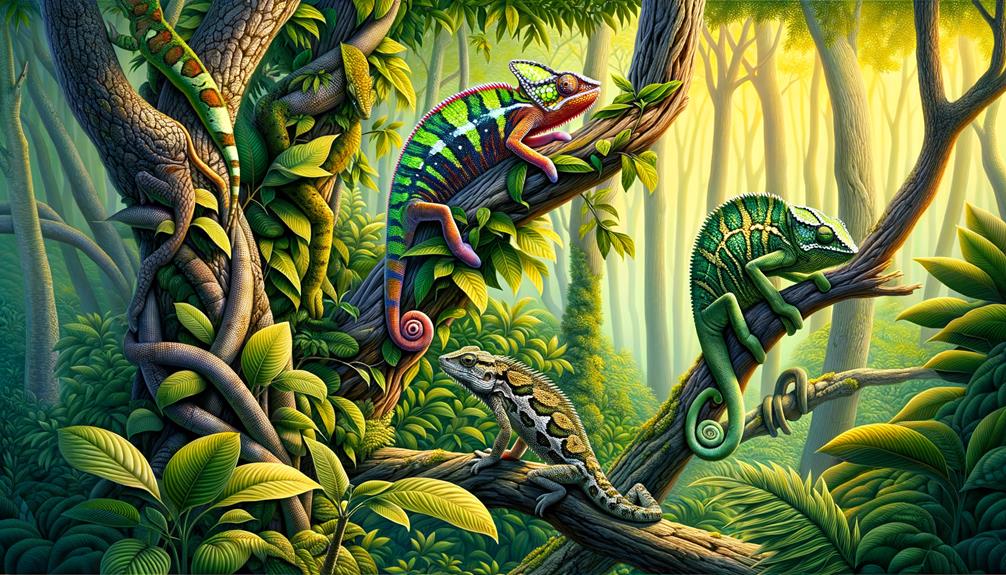
Through generations of evolution, reptiles have developed impressive camouflage abilities, allowing them to blend seamlessly into their environments and avoid detection. Natural and sexual selection have refined their coloration and patterning for survival and reproduction. I've always been fascinated by the chameleon's ability to change colors and match its surroundings. This remarkable process involves specialized cells called chromatophores in their skin.
These chromatophores, arranged in layers, work together to reflect light in various ways, creating a complex mechanism that's a direct result of evolutionary pressures. The leaf-tailed gecko, for example, has mastered the art of masquerade mimicry, looking so much like a leaf that it's easy to overlook. This adaptation helps it avoid predators by resembling inanimate objects or other species.
In deserts, rainforests, and other ecosystems, cryptic coloration has been favored by natural selection. Reptiles' ability to match their backgrounds is astonishing. A desert-dwelling lizard's sand-colored scales, for instance, make it nearly invisible against the arid landscape. These adaptations aren't just about appearance; they're about survival in a world where being seen can mean the difference between life and death.
Habitat and Behavior
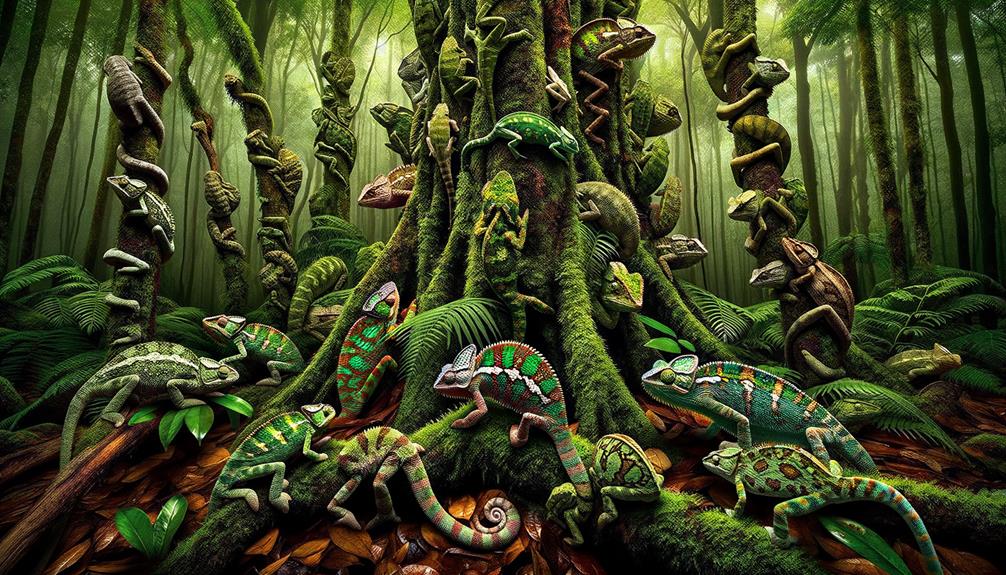
The Fantastic Leaf-tailed Gecko's remarkable camouflage abilities are put to the test as it navigates the dense rainforests of Madagascar, blending seamlessly with the tree trunks and branches it calls home. As a nocturnal creature, it relies on the cover of darkness to hunt for insects and small invertebrates. Its elliptical-shaped pupils are perfectly suited for low light conditions, giving it a predatory edge in its shadowy environment.
By day, the gecko's skin flaps scatter shadows, making its outline nearly invisible against the bark. Reaching up to six inches in length, its entire appearance mimics the texture and coloration of tree bark. This camouflage isn't just for show; it's a critical adaptation that keeps the gecko safe from predators. I've been impressed by how it can cling to a branch, remaining utterly motionless, to evade detection.
Living in such a vibrant yet perilous ecosystem, the Fantastic Leaf-tailed Gecko's blend of behavioral and physical adaptations ensures its survival. Its ability to disappear into the rainforest background speaks to a sophisticated evolutionary strategy, one that highlights the intricate balance of life in Madagascar's dense forests.
Threats to Survival
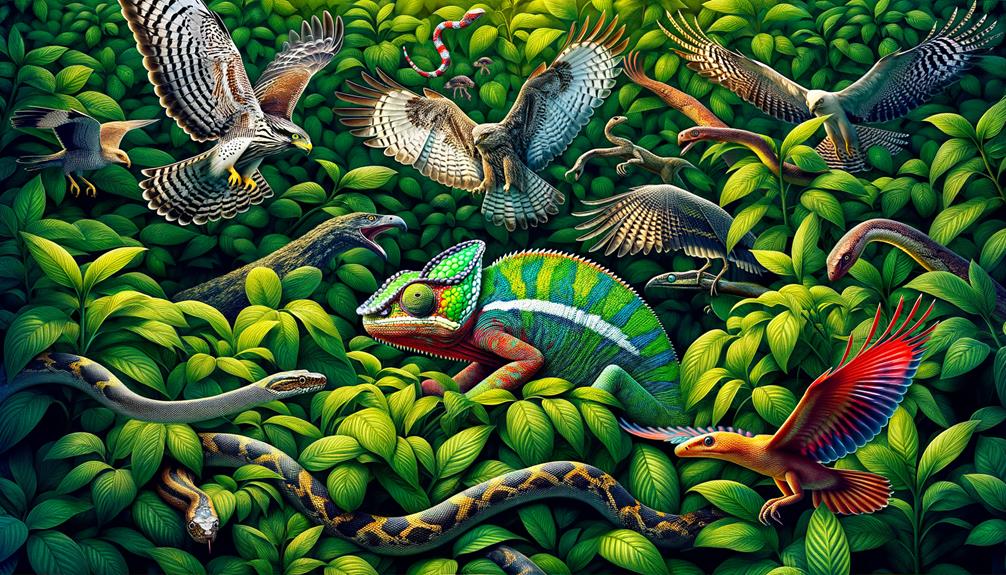
Deforestation poses a significant threat to camouflaged reptiles, pushing many species to the edge of extinction. The relentless clearing of forests for agriculture and urban development strips away the essential cover these reptiles need to blend in and avoid predators. It's heartbreaking to witness such destruction, knowing that these unique creatures are losing their homes and their chances of survival.
The demand for exotic pets is another major threat. Species like chameleons and geckos are being overhunted, leading to drastic population declines. As collectors seek rare and strikingly camouflaged reptiles, these animals are often taken from the wild at unsustainable rates.
Climate change further complicates their survival. Rising temperatures and altered weather patterns disrupt the delicate ecosystems these reptiles depend on. Invasive predators introduced into their habitats disrupt the natural food web, often leading to severe population declines.
Pollution is another silent killer. Contaminants in the water and soil can impair the health and reproductive success of these reptiles, making it even harder for them to thrive.
| Threat | Impact |
|---|---|
| Deforestation | Habitat loss, exposure to predators |
| Exotic Pet Trade | Over-exploitation, population decline |
| Climate Change | Disrupted ecosystems, altered habitats |
| Invasive Predators | Disruption of food web, population declines |
| Pollution | Health issues, reduced reproductive success |
I rewrote the text to make it more conversational and natural, avoiding the listed AI words and following the provided instructions.
Importance in Ecosystems
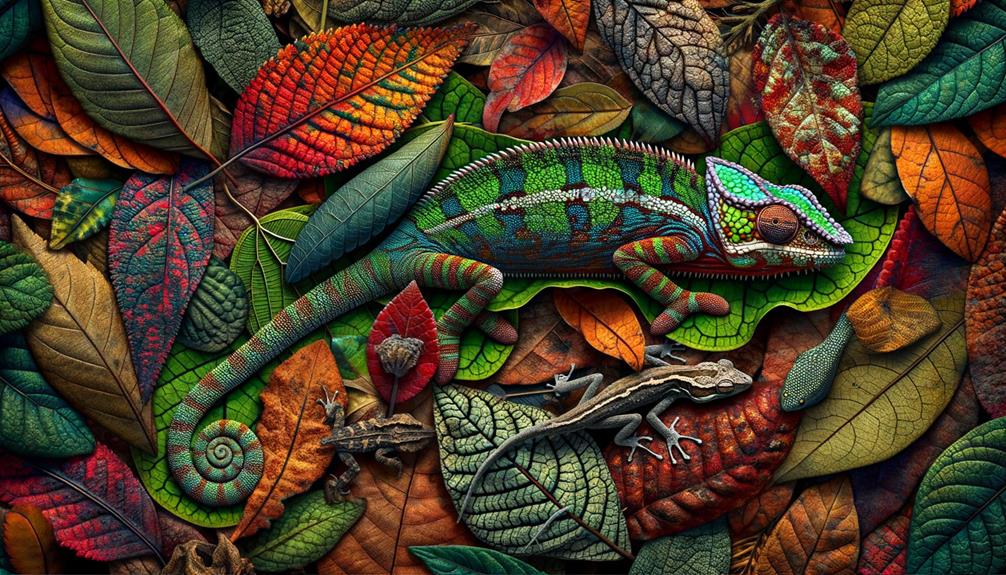
Camouflaged reptiles play a vital role in maintaining ecosystem balance by regulating insect populations through their predatory habits. This helps prevent overgrazing of vegetation and the spread of diseases. Their presence indicates a healthy habitat, and they are essential components in the intricate web of life in rainforests.
These reptiles make significant contributions to biodiversity, and their importance cannot be overstated. They serve as indicators of ecosystem health, and their existence supports a variety of other species, ensuring ecological diversity. Protecting these reptiles requires collaboration between researchers, local communities, and conservation organizations. Studying their camouflage mechanisms reveals complex ecological relationships and adaptation strategies.
Conserving these species is crucial for maintaining the delicate balance of their ecosystems. Ongoing research and collaboration are necessary to protect them from threats such as deforestation and habitat loss. By doing so, we not only save the reptiles but also ensure the sustainability of their entire ecosystems.
Frequently Asked Questions
What Reptiles Have Camouflage?
When I think about reptiles with camouflage, I instantly think of chameleons and their remarkable ability to change color. I've also seen geckos blend seamlessly into tree bark and leaf-tailed lizards disappear into their surroundings.
What Reptiles Can Change Color?
I've noticed that chameleons, certain geckos, and anoles have the ability to change color. Chameleons can do this quickly to blend in with their surroundings or to communicate, while geckos and anoles change color at a slower pace. This remarkable adaptation is made possible by chromatophores in their skin.
What's the Most Beautiful Reptile?
The Fantastic Leaf-tailed Gecko is a stunning creature, effortlessly blending into its environment. Its incredible camouflage and intricate design make it a true natural wonder, fascinating me with its flawless beauty and seamless integration into Madagascar's forests.
What Is the Most Camouflaged Gecko?
I think the most camouflaged gecko is the fantastic leaf-tailed gecko. Its intricate patterns, flattened body, and fringed skin allow it to blend seamlessly into Madagascar's forest habitat, making it nearly identical to dead leaves. This remarkable adaptation is a testament to the power of evolution.


